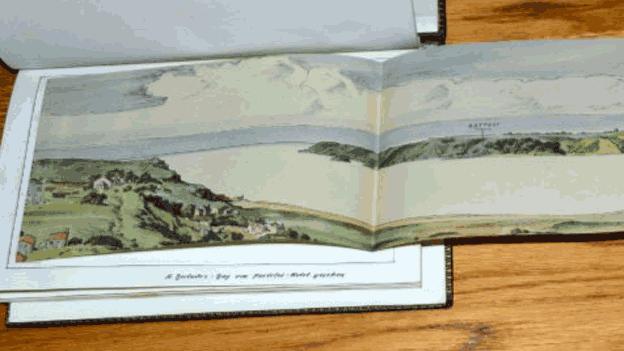Jersey liberation tapestry panel finished
- Published
The 13th panel was commissioned last year
A tapestry marking 70 years of the liberation of Jersey from Nazi occupation has been completed.
Twelve panels, one by each parish, were stitched for the 50th anniversary and were unveiled in 1995.
The last stitch in the new panel, which focuses on liberation celebrations, was sewn by Lady Gene McColl, the wife of Jersey's Lieutenant Governor.
The whole project has involved more than 7.5 million stitches and 30,000 hours of volunteers' time.
The Channel Islands was the only part of the British Isles to be occupied by German forces during World War Two. The military occupation lasted from June 1940 to May 1945.

'Oldest stitcher'
Elaine le Sueur, who was a teenager during the occupation, said she was "honoured" to be asked to put the first stitch in the 13th panel.
She remembers her father being jailed for three weeks after he took flour - which was rationed - to make a wedding cake for her sister and was discovered by the Germans.

The panel illustrates the restrictions applied to certain goods by the Germans, including a ban on radios

Elaine le Sueur, who made the first stitch in the 13th tapestry panel, worked on the St John and Trinity panels in the 1990s
However, all was not lost as the wedding preparations continued despite her father Wilfred Carre being imprisoned.
On the big day Ivy Carre became Mrs Coutanche in her cousin's old wedding dress, flanked by two bridesmaids in dresses made from silk bed sheets.
The great-grandmother of 17 said the tapestry served to remind people "how lucky" they are to "have everything".

Elaine le Sueur and Susannah Blair - as the oldest and the youngest stitchers of the original panels - placed the first symbolic stitch on the final liberation panel

Mrs Sueur, sitting second from the right, said the bed sheet bridesmaid dresses were a "lovely rose pink"

Immortalised
Diane Conway, 77, realised she had been included in the tapestry when she spotted herself in the Red Cross panel, which had been copied from a photograph of people receiving food parcels in 1945.
"We were so pleased to have our Red Cross parcel... we were starving."
The first parcels arrived more than six months after food supplies, usually imported from Germany or Nazi-occupied France, were cut off by the Allied landings in Normandy in June 1944.

Mrs Conway said she was pleased her blonde hair was the right colour in the Red Cross tapestry panel

Mrs Conway - the little girl with the pram - was about 6 years old when she was asked to pose for this photograph in 1945
During those difficult months "people went down [to the beach] to get limpets", until eventually "the rocks had no limpets at all", Mrs Conway said.
Describing her grandmother's limpet stew she said "you couldn't grumble about the taste or anything because you were glad to eat anything".
Mrs Conway said the tapestry was a "beautiful work" and brought back memories of the occupation she would "never forget".

Diane Conway said the tapestry had brought back memories of the occupation

Representing the men
Only one man worked on the tapestries - Kevin Cronin - who ahead of the unveiling of the original panels in 1995 said he thought: "I'm not going to tell anyone about it."
However, at the unveiling he was presented to Prince Charles who told him he had put on a "good show" for the men, which boosted his spirits.
The son of a Jersey-born woman and an Irish man, who moved to the island in 1933, Mr Cronin grew up hearing stories about the occupation.
Caught by German forces after curfew, his father escaped punishment because of Ireland's neutrality.

Kevin Cronin said it was 'a bit daunting' when he met Prince Charles at the unveiling of the original tapestry panels in 1995

Denis Cronin's Irish nationality meant he was let off by German soldiers for certain offences
Mr Cronin said they "didn't see him as an enemy" and could be "quite correct and polite".
He said his parents talked of how German soldiers would show them photographs of their families saying "they would prefer to be back home".
"There was one soldier that used to give my eldest brother, who was about three or four years old, his chocolate ration when he had some."

'Tapestry baby'
Keen stitcher Claire Blair had a young family at the time: "I used to take my baby with me in a little car seat under the table, and she became known as the 'tapestry baby'."
Twenty years later, Susannah Blair joined forces with the oldest volunteer, Mrs Sueur, to make the first symbolic stitch in the new liberation tapestry.
The student said she "felt honoured" to be involved in "making a little bit of Jersey history".

Susannah Blair became known as the 'tapestry baby' by stichers working on the St Ouen panel as her mum Claire Blair took her along while she was stitching
- Published21 April 2016
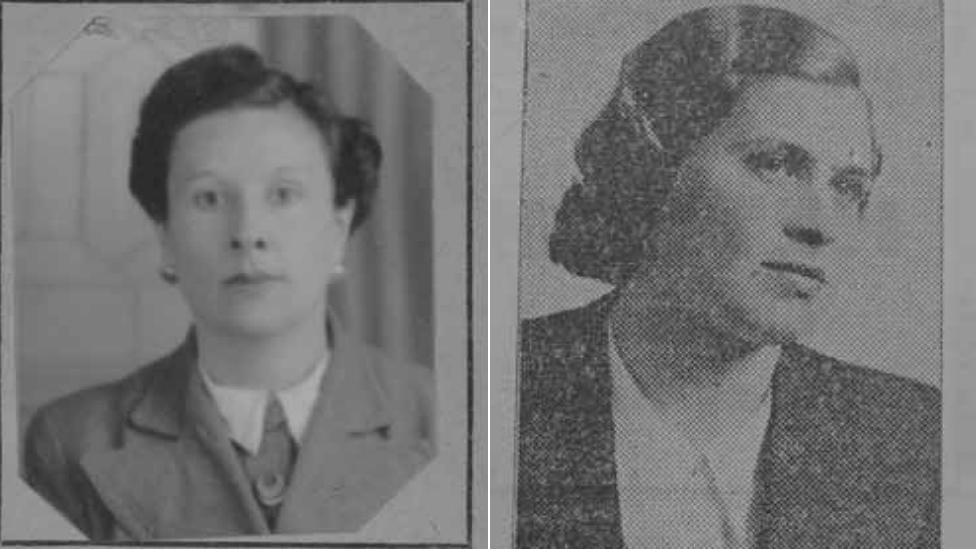
- Published1 November 2015
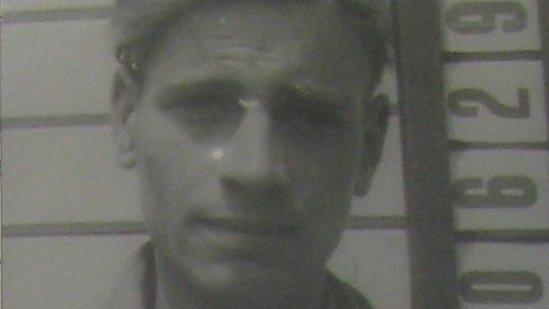
- Published9 May 2015
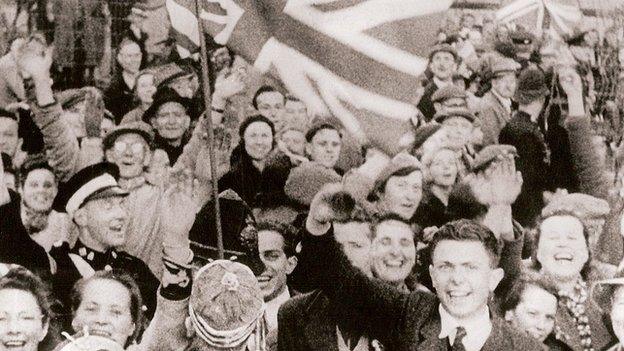
- Published8 May 2015
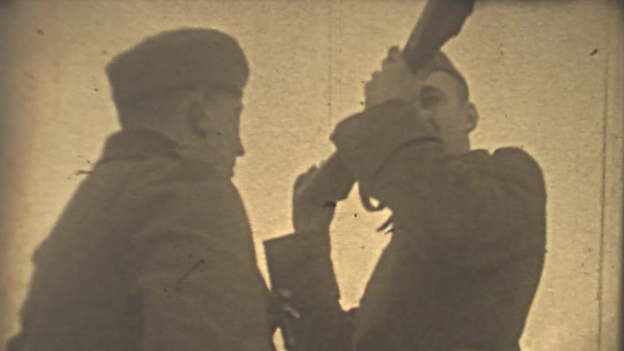
- Published6 December 2014
